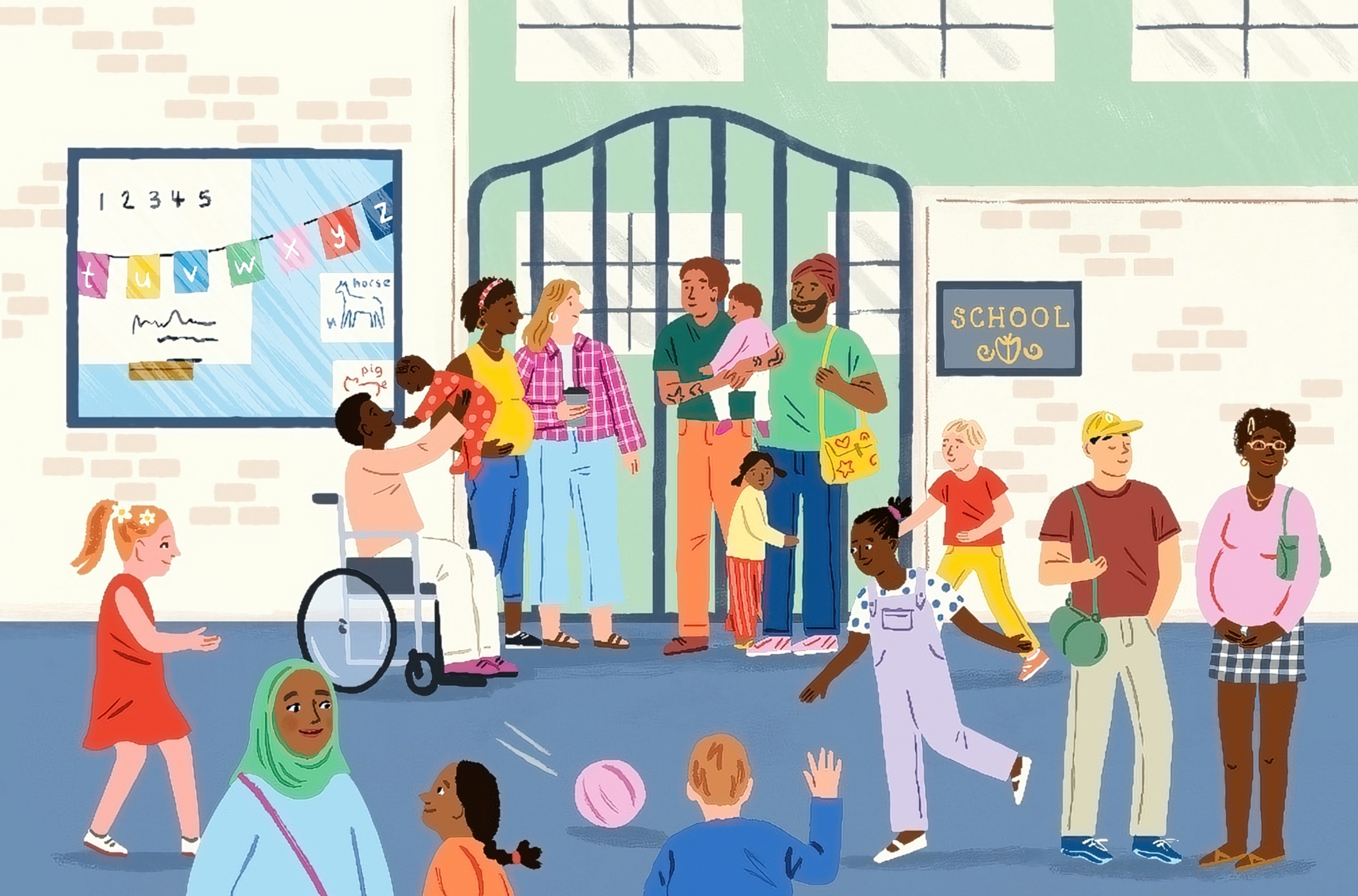As a parent, you may have relied on a reward system at home to get through some challenging milestones (potty training, encouraging your toddler to stay in their bed). Sticker charts can feel like magic in the moment! But what about when rewards are used in school?
Classroom reward systems typically refer to when children can earn tokens, points, or some other currency that can be later exchanged for rewards. A classic example is you could earn points for sitting still, and then five points get you a sticker or a lollipop.
However, there’s a concern that while it might encourage good behavior in the moment, it doesn’t motivate kids generally. In other words, will then only behave well in the presence of the rewards.
Do classroom reward systems ruin intrinsic motivation or love of learning? Do they even work?

What is a classroom reward system?
Any classroom reward system has the basic structure of “kids do something good” as the input and “something good happens” as the reward. But within that, there are many ways to structure a system like this: rewards can be individual, they can be group-based, and they can occur over various time frames. A system where the class earns 15 extra minutes of free time if no one calls out during story time is an example of a reward system.
One thing that makes it generally hard to evaluate either benefits or downsides is that there is no single structure.
In most cases, as practiced in schools, these classroom systems are focused on behavior — either limiting disruptive behavior or encouraging sitting still, etc. Most of these programs are not about rewards for academic achievement. (There is one interesting paper in economics that tried to use a direct form of this — literally paying for test scores for older kids — to improve academic performance. It didn’t work.)
Does it work?
There is a literature on whether classroom reward systems work. By “work,” we mean whether they achieve the goal of better classroom or schoolwide behavior.
The answer is, basically, yes.
We have good summary data from a 2021 paper that analyzed 24 studies of these systems — the authors call them “token economies” — run in elementary schools. The summary of the results is that these 24 studies nearly all find large effect sizes — improvements in behavior — in both general-education and special-education classrooms.
Other literature has focused on group contingency systems in schools — systems where you make a group reward contingent on group behavior. A meta-analysis of 50 such studies found strong evidence of efficacy.
None of this is to say that every token system works the same or is equally effective, but there is quite a wide literature, with many studies across a variety of age groups, that indicates that these systems can be effectively used to improve behavior.
Do classroom rewards ruin intrinsic motivation?
This question has been the subject of decades of debate, without much real resolution. Writing in 1979, one author had this to say in the start of his review on reward systems: “The apparent inability of the American educational system to preserve and enhance the interest in exploration and learning that seems to be intrinsic to most children when first entering school has been cited recurrently in the literature of the field.” He goes on to say that one explanation for this destruction of interest is the adoption of a system of extrinsic rewards.
The actual direct evidence for external rewards crowding out internal motivation is, however, very mixed. There is a series of papers from the 1970s that are largely the origin of the idea that rewards crowd out intrinsic motivation. One example: undergraduate students completed puzzles, motivated by either payment or praise. Those who were paid for the puzzles in one period completed fewer puzzles in a later period when the motivation was removed.
Later researchers have disagreed with these results and with the conclusions. A comprehensive review from 2019 outlines the scope of these disagreements. Reassuringly, the most recent meta-analyses do not suggest that rewards crowd out intrinsic motivation. One issue is that people disagree on the methods of measuring intrinsic motivation. It’s not like giving someone a math test. Depending on how this is measured, the results vary.
There are other nuances. Habit formation is real. Many children are given rewards for potty training, and then ultimately develop the habit, and the rewards are dropped. Very few high school students are still demanding an M&M every time they poop in the toilet. Similarly, if a period of external reward can develop good attention habits in elementary school children, they may carry those habits over. In this way, external rewards could end up looking like they increase intrinsic motivation. Again, we get back to the issues of measurement.
Overall, there is no smoking gun in this literature that would indicate a problem, and most of the data points to there not being much crowding out of intrinsic motivation by external rewards. The literature is large and varied enough that certainly someone could pick out a single study and say, Ha! This shows that rewards are bad, but the bulk of the literature isn’t pointing in that direction.
Externalities and limits
There are two final points I want to make here. The first is about externalities.
A primary challenge with teaching is that a small number of students can cause disruptions for everyone. If one student is consistently shouting out or running around the classroom, this makes it hard for other students to learn, and they take up time that a teacher could be spending on the rest of the class.
Reward systems are often designed to address disruptive behavior among a small number of kids because that behavior has negative externalities on the other students. If the behavior of the small number of kids is improved, the learning environment improves for all children. For this reason, there may be value to this change even if the individual disruptive students are not developing intrinsic motivation.
My second point is about the limits of how we implement “evidence-based” strategies because I would describe reward systems as an evidence-based strategy for improving classroom behavior. There is a lot of data to show they work and little reason to think they cause problems. However, this does not mean that they work in any form.
I received this email below:
Hello! I am a mom who has a first grader in the public school system of Philadelphia. They have a program called PBIS Rewards. It seems to be a schoolwide (and maybe nationwide?) program based on a point system. The children in the one first-grade class seem to be doing fine because the teacher isn’t putting much emphasis on it. But the other class is really struggling. Children are crying at night about not getting enough points, getting anxiety about possibly not being able to participate in fun events at school from lack of points, etc. A lot of the parents seem to be concerned. The teachers say this is “evidence-based.”
The PBIS system is a nationwide school-based system for positive behavior improvements in schools. It has been shown, in at least some studies, to reduce schoolwide disciplinary and suspension rates. One component of this program is a token reward system in which classrooms or students can earn privileges as a result of good behavior.
The point system is only a small part of this overall approach, and it’s intended as a reward system, not a punishment system. This letter, though, makes it clear that isn’t always how it’s coming across. Whether it’s impacting intrinsic motivation isn’t clear, but creating anxiety in first graders is not good. “Evidence-based” is tricky here — the general idea is, but the implementation may not be.
There is no substitute for thinking. A reasonable person will obviously conclude that a program that leaves first graders unable to sleep due to anxiety isn’t helping, even if the data says a related version of it might.
The bottom line
- Token economies or classroom-based reward systems have been shown to improve behavior in both general-education and special-education classrooms.
- The bulk of the evidence does not suggest that external rewards destroy intrinsic motivation.
- Implementation matters: reward systems should not be punishment systems.
















Log in